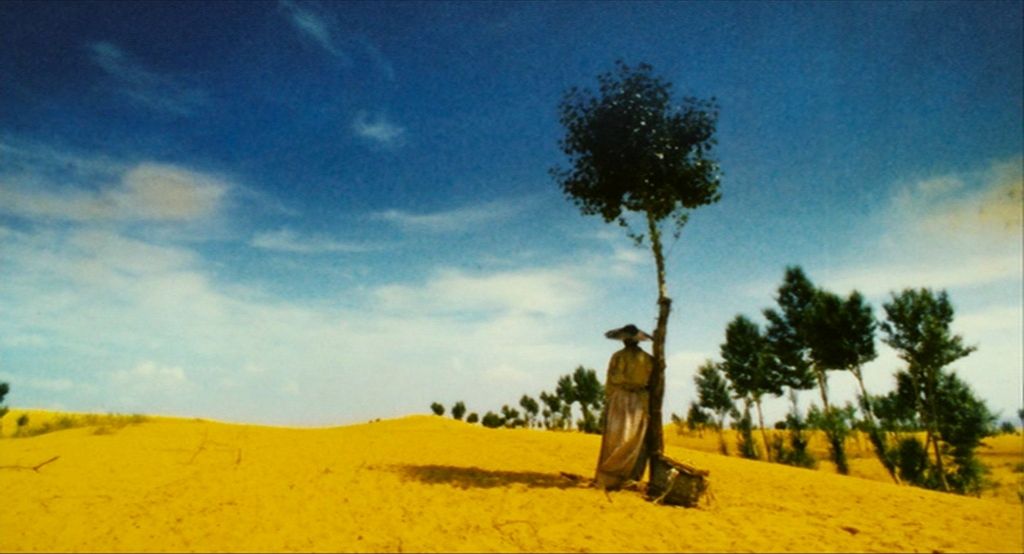
Wong Kar-wai’s adaptation of Jin Yong’s novel The Legend Of The Condor Heroes, Ashes Of Time (1994), is a sort of turning point in the filmmaker’s career. Here his collaboration with cinematographer Christopher Doyle really begins to originate the style that prevailed in Chungking Express (1994) through to Happy Together (1997). Shifting perspectives, extensive narration, kinetic edits, fast paced camera moves, and intense color saturation are all easily recognizable hallmarks of the films Wong Kar-wai made during this period.
These aesthetic features become even more prominent in Wong Kar-wai’s “Redux” version of Ashes Of Time. The filmmaker digitally enhanced the colors, lights, and even some of the movements in the film. The technological capabilities of the early 2000s renders these changes as dated, but they feel akin to the DV tape qualities in Fallen Angels (1995). The end effect transforms Ashes Of Time into a kaleidoscopic montage of wuxia operatics. The grainy digital sheen of Ashes Of Time almost suggests that the film takes place entirely in the dreams of a character in either Chungking Express or Fallen Angels.
Ashes Of Time and its sister film, Jeffrey Lau’s The Eagle Shooting Heroes (1993), represent two very different interpretations of the same source material as well as the wuxia genre as a whole. Viewed together the films enter into an odd sort of discourse that is highly reflexive. Effectively, the end result of this discourse is an examination of the Hong Kong star system that was roughly in place at the time.
Unlike Wong Kar-wai’s subsequent films Ashes Of Time does not feel like the filmmaker’s external expression of his interiority. Ashes Of Time is the director’s personal homage to the wuxia genre, borrowing heavily from King Hu and Legend Of The Mountain (1979) more specifically. It’s a shame that this film couldn’t be included in the Criterion Collection boxed set of Wong Kar-wai’s most popular films.
